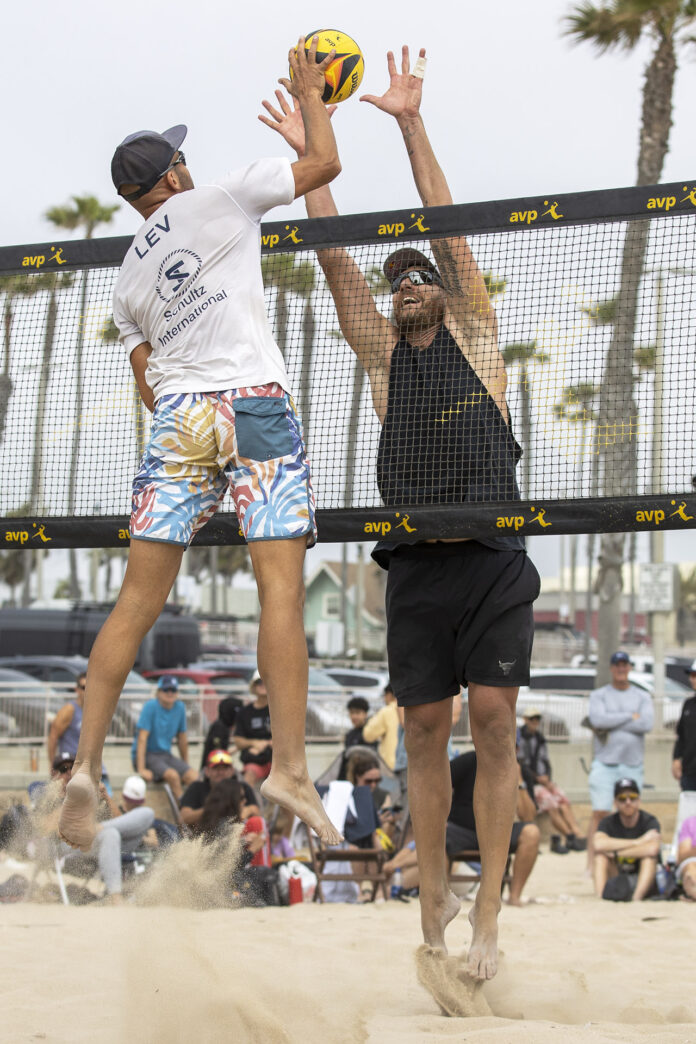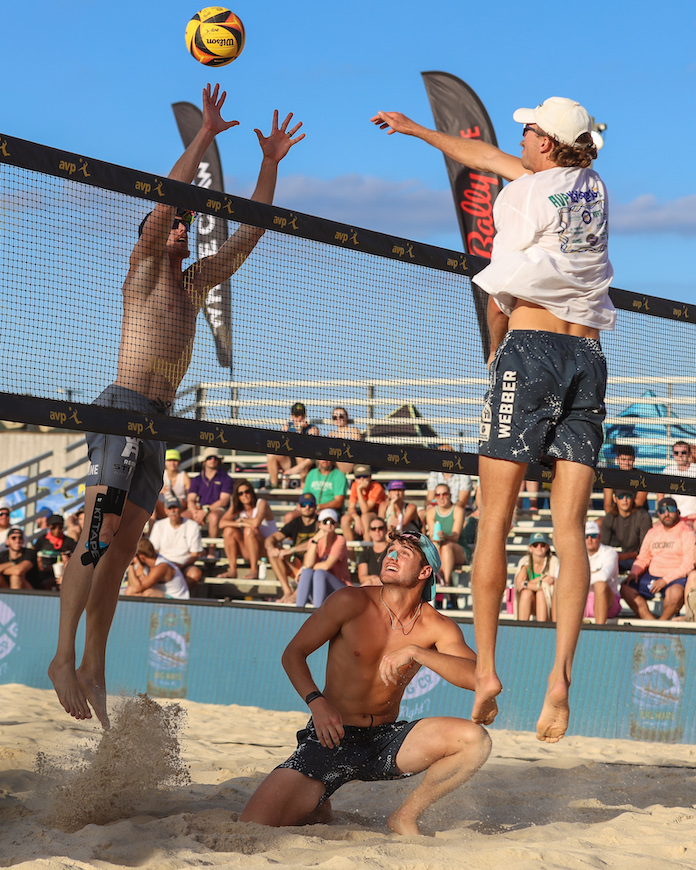USA Volleyball announces veteran-laded 12-player Olympic roster
May 11, 2024
June 14, 2023
HERMOSA BEACH, Calif. — We are roughly at the mid-point of this 2023 season, and roughly 12 months away from the final event of the Paris Olympic race. Given those two notes, our semi-monthly SANDCAST beach volleyball mailbag was awfully full, and I won’t waste any more of your time with a lengthy introduction.
We’re getting straight to business.
The Olympic race is a long and somewhat complicated process. There are three ways to earn bids — points, wild card, continental berth — in a three-tiered system that is making its Olympic qualifying process debut of sorts. Nobody really knows the proper strategy. Do you play every Elite16 you can, with the potential for massive points but also the high risk of a poor finish in a brutal qualifier that is hardly a litmus test of your ability as a team? Or do you cruise in Challenges, where the draws are a smidge easier, the potential to at least make some money higher, but the points not as big? Everybody’s strategy is constantly changing.
I don’t know, exactly, what Taylor Crabb and Taylor Sander have in mind as far as the Olympic race goes. I do know that they are not playing this weekend’s Jurmala Challenge in Latvia because it’s a one-off event in Europe that costs more than $3,000 to get to — not to mention hotel, food, taxis, and opportunity cost — and, when one does the simple math of points and finances, it just doesn’t make a ton of sense. So they’re waiting for Challenges in Espinho and Edmonton and they’ll see where they stand from there.
Will they qualify for World Championships? Even if they win both Espinho and Edmonton, which isn’t likely, given they’ll begin both events in the qualifier, they probably won’t. Not qualifying for World Championships, the tournament with the most points on the line, is a devastating blow to anyone’s pursuit of an Olympic Games. So no, they’re not in great shape to qualify for Paris, but as Tri Bourne said on the podcast, “I’m assuming yes [they’re still going for Paris] until they tell me no. That’s hard to comprehend that would be the case. I’m not turning my back on those guys.”
It’s also important to note that the Olympics, while a goal for most, and certainly the goal that most fans want for the players, might not be the biggest one for the players themselves. When Crabb qualified for Tokyo with Jake Gibb, we had him on the podcast, and he said something that is quite relevant today: “For beach volleyball specifically, everybody talks about the Olympics. That’s the overall goal. But they look past that we have a season. We have a tour. The NBA is more important than the Olympics. To win that championship, and then becoming an Olympian is a bonus. Our season gets looked over. Everything is just focused on the Olympics, just get there. That’s what I hope to see change, is that we have our season, our change, and it’s just as important, winning our season, then on top of that, becoming an Olympian. Our season should be just as important.”
Crabb has always been a proponent of building up the AVP. Last weekend, he competed in a Tour Series in Virginia Beach with John Sutton. It is no coincidence that the biggest crowds were on Crabb’s court. He’s “the people’s champ,” as Bourne called him, because he plays events like that — events he doesn’t need to, events with little tangible reward other than a good time and beach volleyball, events where his presence alone makes it considerably better. I don’t know what their goal is, and where the Olympics stands on their priorities. But I do know that, even when Crabb qualified for his first Olympic Games, he made a point to note that building the tour we have at home has always been one of his main focuses.

It sure seems that way, which I love. It blew my mind a bit to see Alison, who has an argument to be considered the greatest blocker of all-time, playing in a Tour Series event with Billy Allen, a two-time AVP champ. There has been a considerable amount of grumbling from some on the AVP about international players — Alison, Sam Schachter, Jake MacNeil, Alex Russell, soon Alvaro Filho in Denver — competing on the AVP. The argument is that this is America’s Tour, and it should feature American players. I see that as a myopic argument. One of the main reasons that the major sports leagues — NFL, NBA, MLB, PGA Tour, NHL — have the influence and market share they do is because they feature the best players in the world, hands down. The product is as good as it can be, and the networks and advertisers recognize it as such.
The AVP once boasted that it was home to the best players in the world, hands down, until it became an Olympic sport and players had to choose between, essentially, the AVP or Olympics. When the FIVB became the method by which players qualified for the Olympic Games, the FIVB then boasted that it had the best players in the world, which it still does. I love to see players such as Alison, or Schachter, or Canadians Melissa Humana-Paredes and Brandie Wilkerson and Sarah Pavan, competing in the United States. There is a direct correlation between star power and crowds — Alison was quite a draw in Huntington Beach and Virginia, despite the former being a qualifier and the latter being a Tour Series with significant budget cuts — which is also a direct correlation to a better product, more eyeballs, and more advertisers that want their products to be seen by those additional eyeballs. Star power creates rivalries, rivalries create storylines, storylines create interest, interest creates and draws audiences. The best rivalry in the sport for a full Olympic quad was Alix Klineman and April Ross and Humana-Paredes and Pavan. Every time they played one another on the AVP, they did so in front of a packed stadium.
Imagine if the AVP didn’t allow it because they compete for Canada.
So, yes, Alison seems to be playing full-time on the AVP. To me, that’s awesome. As they say in Portuguese: Bemvindo, Alison.

Ah, yes, the great mid-season partner shuffle is upon us. Logan Webber and Evan Cory have split, creating a massive trickle-down effect that saw Webber pick up Hagen Smith and Cory pick up Troy Field. Down the line, Cody Caldwell and Chase Frishman also split, and Frishman has since turned to Bill Kolinske.
As for why Cory and Webber split, it just didn’t seem like they were turning the corner. They played in six events this season. Three of those were international, in Qatar, Mexico, and Brazil. They didn’t qualify once. They barbecued out of Huntington Beach and lost early to Dylan Zacca and Caleb Kwekel in a big money tournament in Arizona put on by Skylar del Sol. Yes, they took a career-high fifth in New Orleans, but it was a watered-down event that more resembled a Tour Series and both of them recognized it as such. It’s easy to see where the frustration might lie. When you’re traveling the world, and your income is based on your performance on the court, there is little time for a mid-season malaise, especially when there are options on the table. There were great options for both.
Cory and Field should be a tremendous team, rife with athleticism and offensive firepower. Webber and Smith won their first event together in Virginia Beach and went 2-0 in pool play during a Pan American Games qualifier on Tuesday. It could very well be an upgrade for everyone involved.

The word I’d like to highlight and bold in that question is “option.” Yes, it is nice if you have the skill set to jump-set and hit balls on two as an option but is it a necessity? No. Of the top 10 teams in the world, only Sweden’s David Ahman and Jonatan Hellvig jump-set and option on a regular basis. Anders Mol and Christian Sorum have added it as an occasional wrinkle in certain situations, mostly in transition off an easy dig. Alex Brouwer and Robert Meeuwsen, Michal Bryl and Bartosz Losiak, Cherif Samba and Ahmed Tijan, George Wanderley and Andre Loyola, Renato Lima and Vitor Felipe, Marco Grimalt and Esteban Grimalt, and Paolo Nicolai and Sam Cottafava all use it in similar scenarios with similar frequency, which is to say rarely, and only when it makes sense.
Is it nice to have? Of course. Being able to jump-set and option effectively, without a rash of silly, self-inflicted errors is a decidedly unique weapon. It’s easily the best way to negate the massive blocks of, say, Meeuwsen, Bryl, Nicolai, Nils Ehlers, Stefan Boermans and other giants. It’s one of several reasons why Miles Partain and Andy Benesh have raced into Elite16 main draws and won a bronze medal in Ostrava. It’s also why Sweden is the nightmare that they are.
But “I think people are going to overcorrect a bit,” Bourne said. “It’s kind of foolish not to try it out and see if it can be a weapon in your game but if you’re siding out, why are you changing things?”